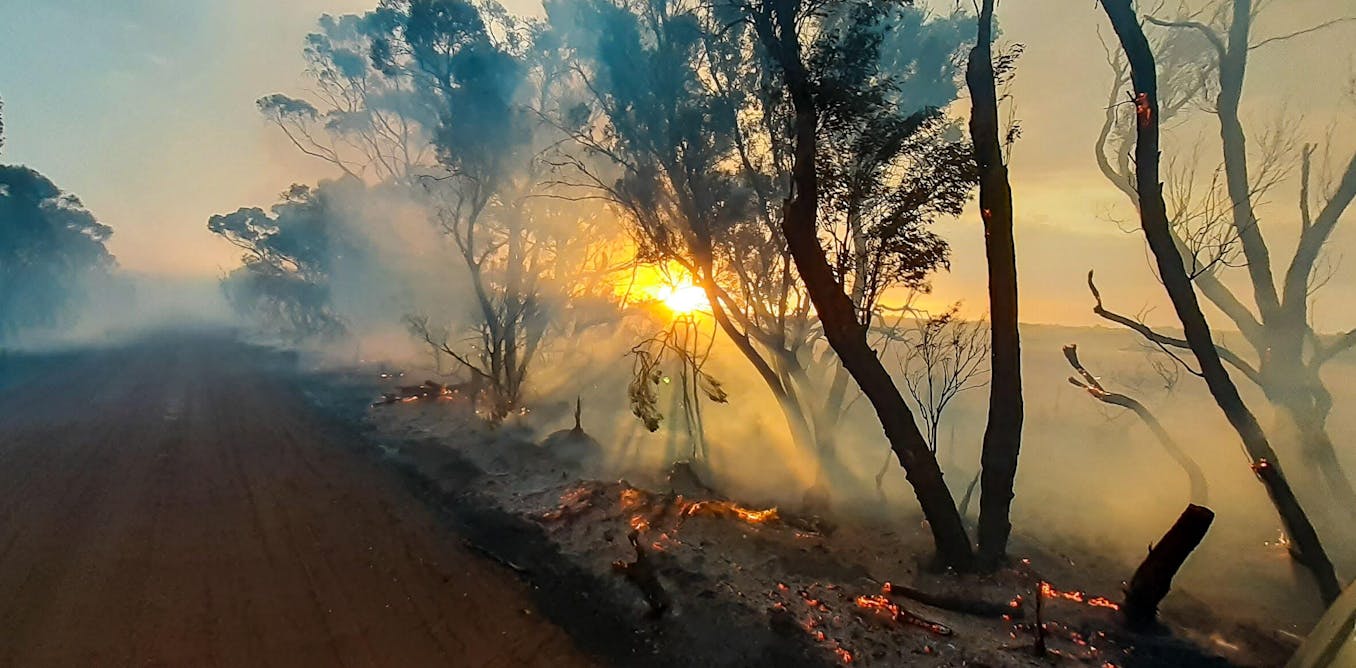BMP Insights: Trick Elements and Conveniences of a Bushfire Management Plan
BMP Insights: Trick Elements and Conveniences of a Bushfire Management Plan
Blog Article
Important Tips for Bushfire Monitoring to Make Sure Fire Protection

Comprehending Bushfire Risk Degrees
Recognizing the differing levels of bushfire danger is crucial for effective planning and prep work in mitigating prospective risks to residential or commercial properties and lives. Bushfire risk levels are normally classified based upon variables such as weather, gas schedule, topography, and historic fire actions. By comprehending these risk degrees, individuals and areas can proactively implement approaches to reduce vulnerability and enhance resilience when faced with potential bushfire events.
The first degree of bushfire threat is low threat, where the likelihood of a bushfire happening and causing considerable injury is marginal. High-risk degrees represent a substantial threat, with conditions conducive to quick fire spread and extreme fire actions.
Comprehending these bushfire risk levels allows stakeholders to customize their preparedness and reaction activities appropriately, making sure a efficient and positive approach to bushfire management.
Developing a Defensible Room
Efficient bushfire monitoring begins with establishing a defensible room around properties to enhance defense against prospective fire threats. A defensible room is a barrier zone that creates a barrier in between a framework and the surrounding combustible plant life. This area functions as an essential line of protection, giving firefighters a risk-free location to operate and helping to reduce the danger of a fire infecting the building.
When creating a defensible space, it is important to think about the format of the residential or commercial property and the surrounding landscape. Cleaning plants, specifically highly combustible plants, within a certain radius of the home can help stop the fast spread of fires. In addition, maintaining a well-irrigated area around the residential or commercial property can better enhance its defensibility.
Regular maintenance of the defensible space is critical to ensure its efficiency. This consists of cutting overhanging branches, clearing dead greenery, and keeping the location without particles. By investing time and initiative into creating and maintaining a defensible space, home proprietors can significantly improve their possibilities of securing their homes and assets during a bushfire.
Carrying Out Fireproof Landscaping
When creating landscapes to minimize the danger of bushfires, incorporating fireproof aspects is vital for enhancing residential or commercial property defense and reducing fire hazards. Implementing fireproof landscaping involves critical preparation to produce a defensible area around structures. Beginning by selecting fireproof plant varieties that are less most likely to ignite and create lower levels of combustible materials. Select plants with high moisture content, low oil web content, and marginal dead greenery to minimize the danger of fire spread. In addition, preserve sufficient spacing in between plants and keep them effectively trimmed to prevent fire from quickly jumping between greenery.

Producing an Emergency Emptying Plan
Creating a comprehensive emergency situation evacuation strategy is critical for ensuring the safety and security and health of people throughout potential bushfire cases (BAL Report). An efficient discharge plan should lay out clear procedures to comply with in case of a bushfire danger, consisting of marked discharge routes, assembly factors, and interaction protocols
To begin developing an emergency situation emptying strategy, it is important to examine the certain dangers and vulnerabilities of your place. Identify several discharge courses that bring about safe locations away from the fire, thinking about aspects such as terrain, roadway availability, and prospective dangers. Establish interaction channels to alert homeowners of an upcoming emptying, making use of techniques such as sirens, message signals, or door-to-door alerts.
Regularly review my latest blog post and practice the discharge strategy with all residents or neighborhood participants to ensure everyone recognizes important source their duties and obligations. Conduct drills to evaluate the performance of the plan and make any type of needed changes. By having a well-prepared emptying strategy in position, you can boost the chances of a safe and organized discharge during a bushfire emergency situation.
Preserving Fire Safety And Security Tools
After establishing a thorough emergency discharge prepare for bushfire occurrences, it is essential to focus on the regular upkeep of fire security equipment to make sure optimum performance and preparedness. Regular upkeep of fire safety tools such as fire extinguishers, smoke detectors, fire alarms, and automatic sprinkler is crucial in safeguarding lives and home during a bushfire. When required., conducting routine examinations, screening, and servicing of these tools by certified professionals is necessary to assure they are in working order.
Fire extinguishers need to be examined routinely for pressure levels, visible damage, and correct performance. By vigilantly keeping fire security equipment, people can enhance their readiness and feedback capacities in the event of a bushfire.
Final Thought
In conclusion, reliable bushfire management involves recognizing danger levels, developing defensible areas, applying fireproof landscaping, developing evacuation strategies, and keeping fire safety and security devices. By complying with these essential pointers, individuals can ensure better fire defense and reference safety for their communities and homes. It is necessary to prioritize proactive procedures to reduce the threats associated with bushfires and to be gotten ready for emergencies.
By comprehending the subtleties of bushfire threat levels, creating defensible rooms, carrying out fireproof landscaping, developing thorough discharge strategies, and making sure the maintenance of fire safety and security devices, communities and people can significantly bolster their resilience versus the devastations of wildfires - Bushfire Risk. These suggestions are not just vital for safeguarding against prompt fire dangers yet also for fostering lasting fire defense methods that can make a considerable distinction in the face of rising bushfire threats
Risky levels symbolize a considerable danger, with problems helpful to quick fire spread and severe fire habits. Regular upkeep of fire security equipment such as fire extinguishers, smoke detectors, fire alarms, and lawn sprinkler systems is essential in safeguarding lives and residential or commercial property during a bushfire.In final thought, efficient bushfire management involves recognizing risk levels, developing defensible areas, applying fireproof landscaping, establishing emptying plans, and maintaining fire security tools.
Report this page